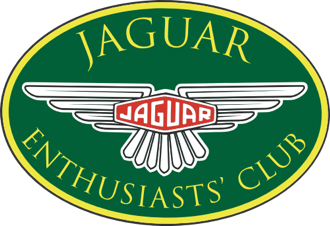
XK
It's a testament to the design of the XK engine that it was last being fitted to a production car some 39 years after its debut. However, the XK doesn't rank among Jaguar's - and Britain's - most iconic engines for longevity alone.
Developed during the Second World War by William Lyons and his small team, the XK was Jaguar's first true in-house design. Featuring advanced features such as a twin overhead camshaft and hemispherical combustion chambers, the XK unit was among the most high-tech power plants of its day.
This put Jaguar in a fantastic position at the close of the war, with one of the highest specific output road-going engines around at their disposal.
The XK would debut in the XK120 Super Sports in 1948 - making it the fastest production car in the world - and was then fitted to the Mk VII saloon in 1950. In this initial 3.4 litre guise, the XK was rated at 160bhp and offered 195lb/ft of torque.
The XK would go on to be fitted to almost every Jaguar model of the next four decades, finding fame in icons such as the E-type, Mark 2 and XJ.

Daimler V8
Not a Jaguar engine by design, as Jaguar inherited the V8 when it took over Daimler in 1960, the Daimler V8 still made a lasting effect despite its limited usage and lifespan.
First debuted in 1959, a year before the Jaguar takeover, the 2.5 litre Daimler V8 was developed by Edward Turner. Turner spent most of his career in the motorcycle industry and was able to provide the V8 with compact dimensions, a fairly light weight and good specific output.
With just 2.5 litres of displacement the Daimler V8 produced 140bhp when fitted with twin SUs, a strong figure for its day.
Being of relatively small displacement for an eight cylinder engine, the V8 was praised for its smoothness and willingness to rev. The Daimler V8 would remain in the inherited SP250 sports car until 1964, and would also be fitted to the body of a Mark 2 Jaguar to create the Daimler 2.5 litre V8 (later V8 250) in 1962.

V12
Jaguar originally began developing a V12 for racing purposes in the '60s, but never completed the project for various reasons. This engine provided the basis for a road-going V12 however, which Jaguar believed would give its car the power to more than compete with the V8 engines then dominant in the US market.
The new V12 was instantly appreciated for its smooth power delivery and would go on to be Jaguar's premium engine option on most of their cars for the following 20 years.
The engine had two overhead camshafts (one per bank of six cylinders) with an alloy cylinder head and block. With a displacement of 5343cc it produced 272bhp as fitted to the Series 3 E-type, which it debuted in, in 1971. In its final form, enlarged to 5994cc and fitted with fuel injection, the V12 produced 315bhp.

AJ6
By the 1980s, the legendary XK engine was starting to show it's age. Jaguar logically decided the best place to begin developing a straight six replacement, was their still-modern V12.
From this start point, Jaguar produced two displacement straight sixes. A 2.9 litre that was effectively half the V12 , as well as a 3.6 litre that was significantly upgraded, by way of a 24 valve twin-cam head.
The 3.6 litre debuted first in 1983 in the XJ-S, with both AJ6s being fitted to the XJ40 from its release in 1986.
With significant upgrades and increases in displacement along the way, the AJ6 (later AJ16) was the bedrock of Jaguar's range for the rest of the 20th Century. Praised as a powerful and refined successor to the famed XK, the AJ6 proved a case of evolution rather than revolution and all the better for it.

AJV8
Reflecting modern trends for more compact engines, the AJV8 was a break from Jaguar's past, being their first engine not to have six cylinders in a row since before WW2.
The AJV8 delivered on its promise of modernity however, being more powerful and significantly more efficient than any of its predecessors.
Indeed in supercharged 4.0 litre form, it developed 370bhp, 10% more than the V12 it effectively replaced.
The AJV8 became Jag's new halo engine from mid 1996-on and remains in production today (although significantly redesigned) in the XJ and F-type.

The Royal Windsor Jaguar Festival
1,200 Jaguars joined us on the 6th of May in the grounds of Windsor Castle for one of the largest gatherings of Jags ever seen, featuring a parade through the town and festivities throughout the day.
The festival was in aid of the Prince Philip Trust Fund, which raises money to help young people living in the Borough of Windsor & Maidenhead, having been established using a small sum of money taken from contributions to fundraising events that took place during Her Majesty The Queen's Silver Jubilee celebrations in 1977. Since this modest beginning, the Trust Fund has benefited from a number of special fundraising events including several car rallies, and it is in this tradition that the Jaguar Enthusiasts’ Club organised the Royal Windsor Jaguar Festival.
Why not purchase a picture of the event from our official photographers?

